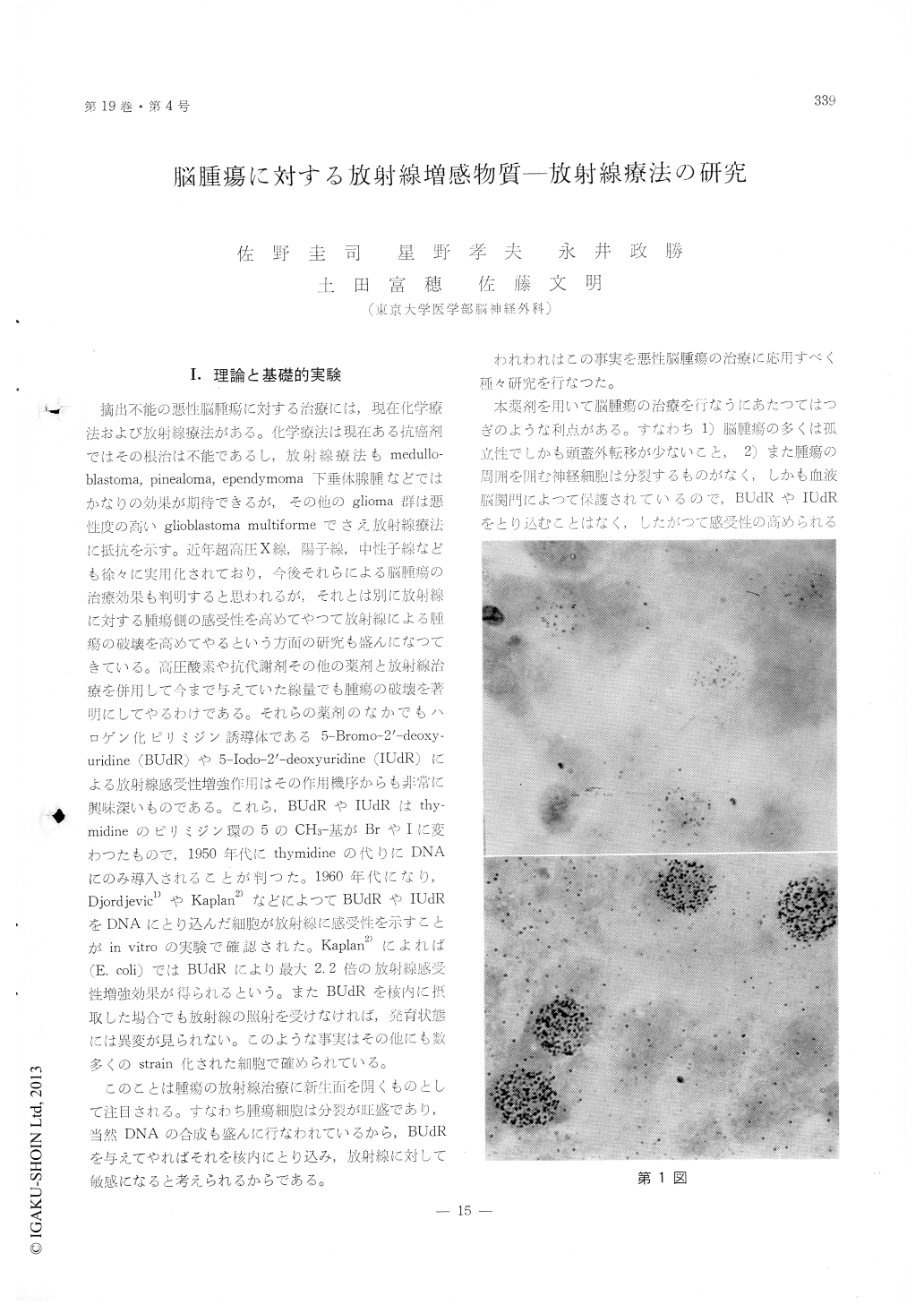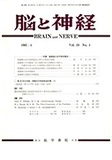Japanese
English
- 有料閲覧
- Abstract 文献概要
- 1ページ目 Look Inside
I.理論と基礎的実験
摘出不能の悪性脳腫瘍に対する治療には,現在化学療法および放射線療法がある。化学療法は現在ある抗癌剤ではその根治は不能であるし,放射線療法もmedullo—blastoma, pinealoma, ependymoma下垂体腺腫などではかなりの効果が期待できるが,その他のghoma群は悪性度の高いglioblastolna multiformeでさえ放射線療法に抵抗を示す。近年超高圧X線,陽子線,中性子線なども徐々に実用化されており,今後それらによる脳腫瘍の治療効果も判明すると思われるが,それとは別に放射線に対する腫瘍側の感受性を高めてやつて放射線による腫瘍の破壊を高めてやるという方面の研究も盛んになつてきている。高圧酸素や抗代謝剤その他の薬剤と放射線治療を併用して今まで与えていた線量でも腫瘍の破壊を著明にしてやるわけである。それらの薬剤のなかでもハロゲン化ピリミジン誘導体である5—Bromo−2′—deoxy—uridine (BUdR)や5—Iodo−2′—deoxyuridine (IUdR)による放射線感受性増強作型はその作用機序からも非常に興味深いものである。これら,BUdRやIUdRはthy—midineのピリミジン環の5のCH3—基がBrやIに変わつたもので,1950年代にthymidineの代りにDNAにのみ導入されることが判つた。1960年代になり,Djordjevic1)やKaplan2)などによつてBUdRやIUdRをDNAにとり込んだ細胞が放射線に感受性を示すことがin vitroの実験で確認された。Kaplan2)によれば(E.coll)ではBUdRにより最大2.2倍の放射線感受性増強効果が得られるという。またBUdRを核内に摂取した場合でも放射線の照射を受けなければ,発育状態には異変が見られない。このような事実はその他にも数多くのstrain化された細胞で確められている。
このことは腫瘍の放射線治療に新生面を開くものとして注目される。すなわち腫瘍細胞は分裂が旺盛であり,当然DNAの合成も盛んに行なわれているから,BUdRを与えてやればそれを核内にとり込み,放射線に対して敏感になると考えられるからである。
Bromouridine (5-bromo-2'-deoxyuridine or BUdR), which is known to sensitize bacterial cells or strained tumor cells to irradiation, was proved to be incorpo-rated into the nuclei of human brain tumor cells cultured by trypsinization-monolayer method. This BUdR had neither antimetabolic nor cytocidal effect and only increased the radiosensitivity of the cells which took it up. The uptake of BUdR into the tumor cell nuclei in tissue culture was enhanced by addition of a small amout of antimetabolites such as methotrexate, 5-FU or FUdR. This fact may be explained on a basis that those antimetabolites in-hibited the biosynthesis of thymidine and therefore dividing cells were forced to incorporate newly given thymidine analogue (BUdR) in order to duplicate their DNA.
Based on these facts, the authors have performed Bromouridine-Antimetabolite-Continuous intra-arte-rial infusion-Radiation therapy (BAR therapy). The principle of our method consists of the administration of BUdR (500~1000mg/day) with a small amount of antimetabolite (e.g., methotrexate 1.5~5.0mg/day) by means of continuous intra-arterial (internal carotid) infution for more than one generation time of the tumor cells (3~7 weeks in brain tumors ac-cording to their malignancy) and simultaneous radia-tion therapy (5,000~6,000R tumor dosis). This thera py was applied to 8 brain tumor cases with good therapeutic results. These cases were reviewed and the results and side effects of this therapy were discussed.

Copyright © 1967, Igaku-Shoin Ltd. All rights reserved.


